What is Plaster?
Plaster is a building material covering rough surfaces such as walls, columns, ceilings, and other architectural components with a thin coat of plastic mortar to create a smooth, long-lasting surface. Plaster is a polymeric material that has been coated (i.e., mortar). Plastering is the term for this procedure. Rendering is the process of plastering an exposed surface on the outside.
Mortar is a light mixture of binders (lime or cement) and fillers (sand or broken stones). Good plaster needs to have a proper bond with the masonry surface. Plaster is made from a dry powder combined with water to create a hard but effective paste before being placed on a surface. Ancient civilizations used mud as plastering to create long-lasting, weather-resistant constructions.
Objectives of Plastering:
- Plaster creates a smooth, consistent, clean, and long-lasting finished surface with a better appearance.
- Plaster shields the surface from the effects of the elements.
- People use plaster to cover the bare stone or brick on the inside and outside walls.
- Plaster can be used to cover permeable and unstable materials.
- It can prevent water from penetrating from one side to the other.
- Plaster adds to the wall’s strength.
- Plasters can extend the life of a wall.
- It has a decorative effect.
- Plaster is a good plain surface for color washes and paints.
- Plaster can help prevent fires to some extent.
Different Types of Plaster Finishes:
Plaster Finishing is the next step after the walls have been built. It is done to ensure that the top surface of the walls is even and to provide an attractive finish. Following are the different types of plaster finishes:
1. Smooth Coat Finish:
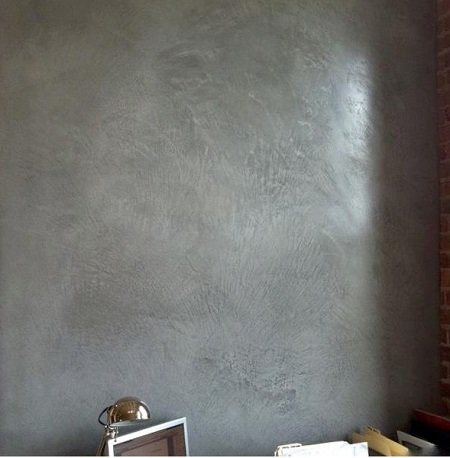
Fig 1: Smooth Coat Finish
Courtesy: wrengineers.in
As the name suggests, a smooth coat finish is accomplished with fine sand and cement to form a mortar mix of 1 part cement to 4-6 parts fine sand. It is versatile across interior and exterior wall treatments (depending on the sand quality and the type of cement used). This plastered surface is great for paint, stencil art, wallpaper applications, and even vinyl sticker applications since it is carefully leveled and smoothed over flat surfaces with a wooden float.
2. Sand Faced Finish:
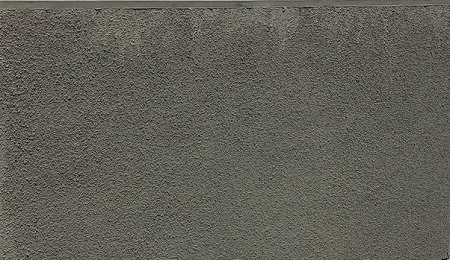
Fig 2: Sand Faced Finish
Courtesy: civiljungle.com
Two coats of sand-faced finish are applied. The initial coat is put in a 12 mm thick 1:4 cement sand mortar. Wish zigzag lines are offered. The second coat is applied in a thickness of 8 mm after seven days of cure second coat mortar is made from a 1:1 combination of cement and sand. The sand of a consistent size is utilized. When the second coat is wet, a sponge is employed.
The last coat’s surface is polished with a wooden float rubbing clean and cleansed sand of uniform size. As a result, the surface has sand granules of the same density.
3. Rough Cast Plaster Finish:
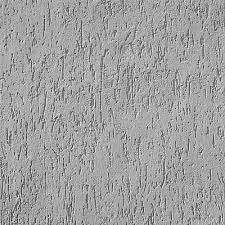
Fig 3: Rough Cast Finish
Courtesy: recli.com
Cement, sand, and coarse aggregate are used in the roughcast finish mortar mix. This mortar’s ratio is roughly 1: 1.5: 3. The coarse used in mortar range from 3 mm to 12 mm. The trowel is used to finish a large amount of mortar. Using a wooden float, level and roughen the surface. It is the most common finish for exterior rendering.
4. Depeter Finish:
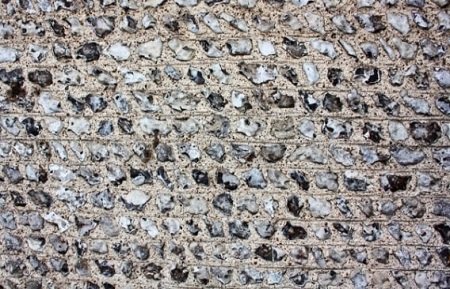
Fig 4: Depeter Finish
Courtesy: mastercivilengineer.com
Its form of final finish layer of plaster is placed on the surface with a thickness of 12 mm, and the bits of gravel flint are pressed with the hand on the surface while it is still wet. Various colored flints can be used to create attractive designs.
5. Pebble Dash Plaster Finish:
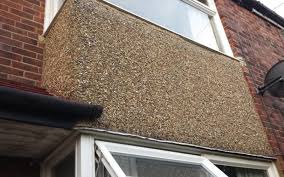
Fig 5: Pebble Dash Plaster
Courtesy: anglotopia.net
Pebble dash plaster is identical to Roughcast plaster. After the first layer of plastering, small pebbles or crushed stones of acceptable size (typically ranging from 6 to 20 mm) are utilized as a finishing touch. Pebble aggregate is splashed onto the coated surface and pressed into the plastered surface using a wooden float. The cement slurry is removed after pressing to produce the appearance of just stones. Often, groves or patterns are made to improve the appearance. They give the structure an appealing appearance after hardening
.
6. Textured Plaster Finish:
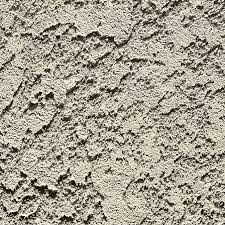
Fig 6: Textured Plaster Finish
Courtesy: omeha-products.com
A textured finish combines sand, cement, lime, and water with various additions such as fibers and synthetics, acrylics, and even coloring pigments. For textured interior décor installation, textured plaster finishes are commonly used on boundary walls or feature walls.
The use of stucco plastering, which has a rough surface but is sometimes smoothed over to create repetitive patterns, results in a textured plaster finish. With various tools on the freshly placed final layer, this finish creates ornamental finishes or textured surfaces. This finish has all of the benefits of the rough finish.
7. Scrapped Plaster Finish:
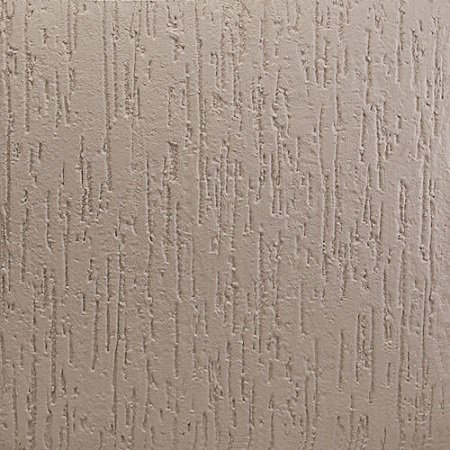
Fig 7: Scrapped Plaster Finish
Courtesy: wrengineers.com
A 6 to 12 mm thick layer of mortar is used for the scraped finish. The mortar is left to dry for a period after being laid. The layer of plaster is then scraped at short intervals to a depth of 3 mm with a steel blade or plate in this finish. Such scraped surfaces can conceal cracks.
8. Stucco Plaster Finish:
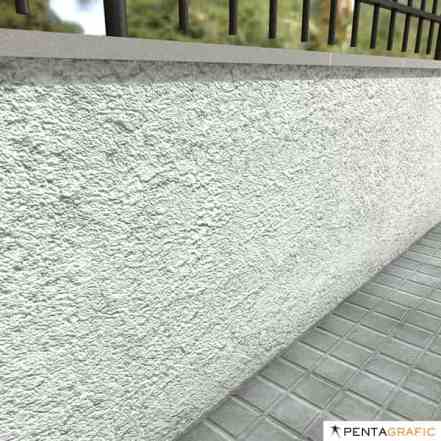
Fig 8: Stucco Plaster Finish
Courtesy: civiconcept.com
A stucco plaster finish is a form of plaster that produces a high-quality finish. This plaster can be used on both indoor and outdoor surfaces. It’s normally applied in three layers, with the total thickness of the plaster being around 25mm. A Scratch coat is the first coat; a finer coat of brown coat is the second coat, and a white coat or finishing coat is the third coat.
9. Waterproof Plaster Finish:
Plastering must be done with a waterproof cement compound of recognized make and manufacture. The material must be delivered to the job site in its original packaging. The compound must be well mixed with dry cement in a 3 percent by weight ratio or as advised by the manufacturer.
10. Exposed Aggregate Plaster Finish:
The application method is the same as for the sand-faced finish. The thickness of the exposed aggregate finish plaster must be 20 mm. The proportion of cement to marble chip should be 1:1, and the pebbles should be carefully washed and drained. White and colored marble chips, ranging in size from 6 mm to 12 mm, will be used and obtained by crushing hard marble stone.
11. Special Plastering Material for the Finishing Coat:
i) Acoustic Plaster:
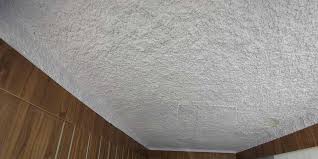
Fig 9: Acoustic Plaster
Courtesy: anakon.com
For acoustic plaster, gypsum is mixed with cement mortar. This finish is applied in two coats. The thickness of each of these coats is 6 mm. When gypsum and mortar are mixed, the plaster then forms bubbles, which can absorb sound. It is known as acoustics plaster because of its qualities. Acoustic plastering materials are utilized in movie theatres, auditoriums, and other public spaces.
ii)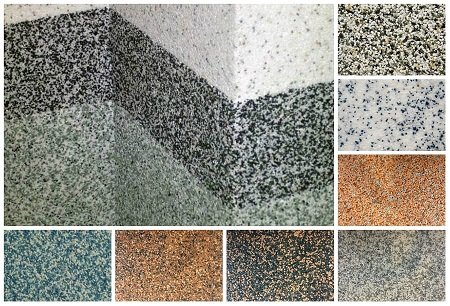 Asbestos Marble Plaster:
Asbestos Marble Plaster:
Fig 10: Asbestos Marble Plaster
Courtesy: matercivilengineer.com
Mortar is formed of cement asbestos and finely crushed marble and applied as a finishing layer for a better appearance.
iii) Granite Silicone Plaster:
It’s a type of plaster made by combining silicon and granite with mortar. The use of such plaster coatings is reserved for structures with exceptional qualities. Its nature is anelastic, and the setting is rapid. The cracks on the surface are filled using this plaster.
iv) Barium Plaster:
Barium cement is made by mixing barium sulfate into a plaster mortar mixture. This sort of plaster is used to finish X-ray rooms. This sort of plaster can absorb X-ray radiation without causing harm to people.
v) Plaster of Paris of Gypsum Plaster:
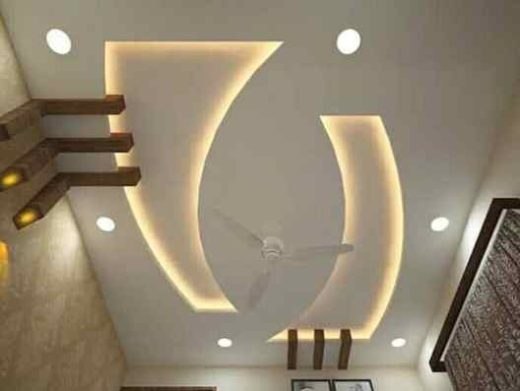
Fig 11: Plaster of Paris
Courtesy: civiconcept.com
Plaster of parish is made by heating ground gypsum to 160° to 170° C. When you add water to the plaster of Paris, it hardens in 3 to 4 minutes. For the quickly setting process, appropriate retarders are used. Plater from a parish is commonly used for ornamental work and reporting carks in conjunction with lime.
vi) Keene’s Cement Plaster:
Plaster of Paris is mixed with alum in specified amounts to make Keene’s Cement Plaster. These plaster varieties are utilized for decorative purposes because they harden to a gloss that resembles white glass after a few days of hardening.
Conclusion:
Plastering your wall will help you obtain a smooth or firm surface, depending on your choices. It can assist you in increasing safety and aesthetic appeal. Even though we discussed a few pointers to assist you with each finish, plastering requires commitment and experience to get the look you desire for your walls.
References:
1. Types of Plaster Finishes and External Rendering for Buildings – The Constructor. (2017, February 21). The Constructor; theconstructor.org. https://theconstructor.org/building/types-plaster-finishes-external-rendering-buildings/14532/
2. Mohdsuhel. (2021, June 13). Various Types of Plaster Finishes. CivilMint.Com; civilmint.com. https://civilmint.com/plaster-finishes/
3. Mahajan, B. (2021, June 22). What Is Finishes Plaster | 10 Types of Plastering Finishes | Exterior & Interior Plaster Finishes. Civiconcepts; civiconcepts.com. https://civiconcepts.com/blog/types-of-plastering-finishes
4. Different Types of Plaster in Building Construction. (2020, October 25). Mastercivilengineer; mastercivilengineer.com. https://mastercivilengineer.com/different-types-of-plaster-in-building-construction/
5. Rajput, K. (2021, August 20). 14 Types of Plaster Finishes (List of Plaster Finishing). CivilJungle; civiljungle.com. https://civiljungle.com/types-of-plaster-finishes/
6. Plaster: Types, Plastering Process, Advantages & Disadvantages. (2020, June 17). Constructionor.Com; constructionor.com. https://constructionor.com/plaster/
7. Admin. (2021, February 5). Types of Plaster Finishes (List of Plaster Finishing). Types of Plaster Finishes (List of Plaster Finishing); wrengineers.in. https://wrengineers.in/types-of-plaster-finishes-list-of-plaster-finishing/
8. Type of Plaster Finish & its specifications – CIVIL SITE VISIT. (2019, May 23). CIVIL SITE VISIT; civilsitevisit.com. https://civilsitevisit.com/type-of-plaster-finish-its-specifications/
If you have a query, you can ask a question here.


